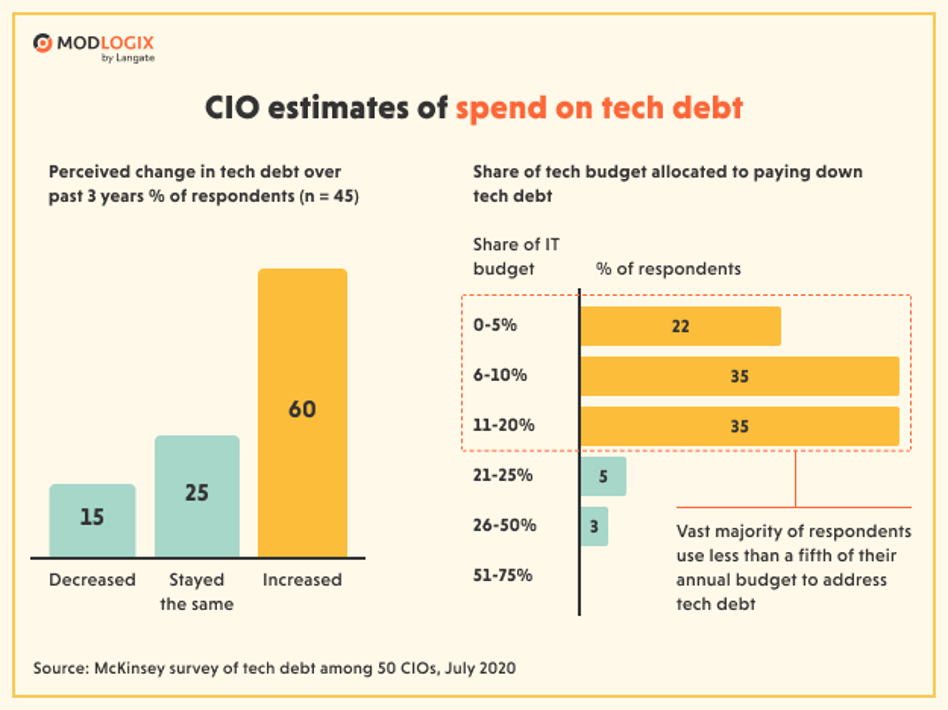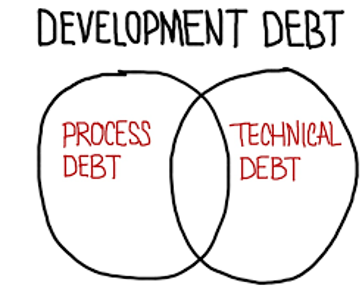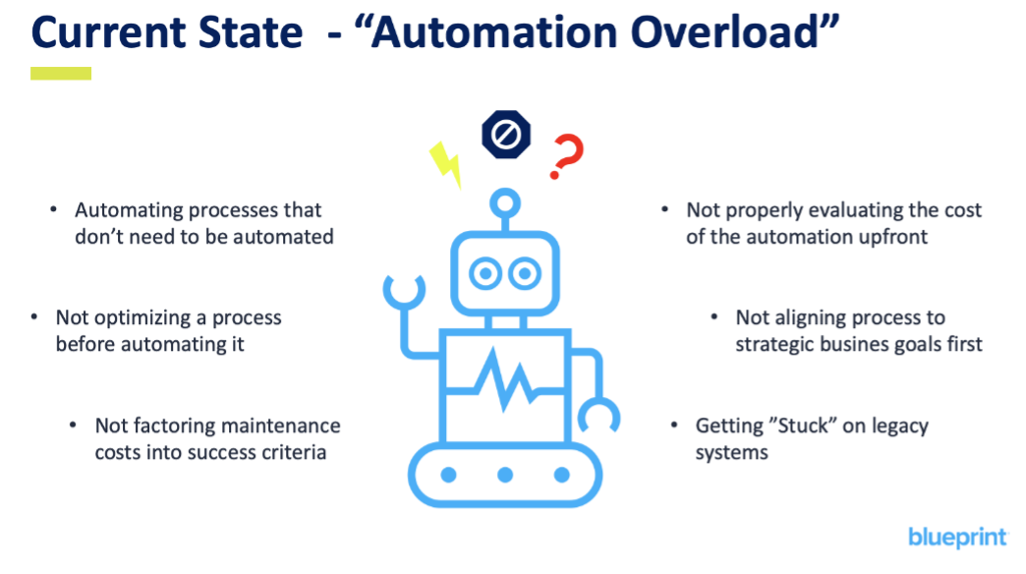
September 28, 2022
In the digital world,
success requires reducing your debt trifecta

How much are technical debt, process debt, and people debt costing your organization?
CEOs and Boards are increasingly looking to digital technology as the primary source of new business growth and profitability. Increased corporate profits are directly related to a company’s ability to leverage digital capabilities and have resulted in margin and profit growth that is 2 to 3 times faster than industry averages.
In order to deliver on those expectations, CIOs and their senior leadership teams need to evolve IT from a cost center support function to a profit engine that directly contributes to delivering increased revenues, margins, and profits. They must proactively widen their leadership aperture and rebalance the time they spend running the business (80%) vs. driving new business growth initiatives (20%).
The biggest drags on expediting this evolution are the time, cost, and resources allocated to maintaining legacy systems and processes. These set of operating circumstances have even spawned their own debt trifecta vocabulary: technical debt, process debt, and people debt.
How committed is your company to reducing its technical debt?
Technical debt is defined as “a collection of design or implementation constructs that are expedient in the short term but set up a technical context that can make future changes more costly or impossible.”
Technical debt has even spawned its own sub-component vocabulary which includes:
- Code Debt
- Architectural Debt
- Test Debt
- Documentation Debt
- Infrastructure Debt
The results of a 2020 study by McKinsey of 50 CIOs shows on the chart below that over 60% of their companies were increasing their technical debt while 92% of these companies used less than 20% of their budget to pay down their technical debt.

As long as those percentages persist, there can be only modest investments made in new digital technologies that are increasingly the primary source of new business growth.
In my recent work with several companies, we have attacked this challenge by using our trapped value recovery program to identify three ways to reduce technical debt:
- Modernize legacy systems of record
- Consolidate duplicative systems of record
- Eliminate low value, low usage systems of record
The value and benefits of this approach have freed up significant budgets and time that have been redirected from maintaining systems of record to building and deploying systems of engagement and systems of intelligence. It has also had a major impact on retaining key design and development employees who want to put their talents to work to grow the business not just run the business.
What is process debt and how does it impact the efficiency and effectiveness of your operating workflows?

Process debt is “the result of implementing a process tactically to overcome an issue such as a change in working practices, a lack of system functionality, or a disconnect between a job role function and the ability of a system or application to deliver the outcome required.”
Over time, process debt:
- Slows systems and application development time down
- Creates multiple workflow inefficiencies, redundancies, and waste
- Greatly reduces organizational execution effectiveness
- Overall decreases employee and customer value
Automation is a good example of where there is a significant accumulation of process debt. This has been caused by a “rush to automate everything” mindset – the belief that it’s the panacea of efficiency.
In fact, the exact opposite has occurred as shown on the slide below:

Our trapped value recovery and redeployment program is equally effective in identifying process redundancies and maintenance costs which can be redirected to high-value, highly efficient workflows.
Like reducing technical debt, it also has a very favorable impact on employee retention as people are able to spend more time on “grow the business” workstreams rather than “run the business” workstreams.
Technical Debt + Process Debt = People Debt

Last year, only 34% of the 57,022 full and part time employees surveyed by Gallup reported feeling engaged at work, while 16% said they were actively disengaged. Today more than a third of workers are searching actively for a new job.
It costs businesses $4,129 on average to hire new talent with an additional average cost of $986 to onboard them. Simply put, you lose over $5,000 each time an employee walks out the door – not to mention the unquantifiable cost of losing a knowledgeable and experienced employee. That is my definition of people debt.
Reducing people debt starts with increasing the amount of time and focus your best people spend on high value, high impact work that directly contributes to increasing the performance of your company.
In the work I do with clients, we start by documenting how much of a person’s time is spent on “run the business” activities vs. “grow the business” activities. In most cases that is 80%-20%. We then develop a program to shift those percentages to 30%-70%. This work has become a major factor in developing and retaining the mission critical resources organizations need to effectively compete as digital enterprises.
As companies continue to fight the increasing economic headwinds brought on by rising inflation, supply chain disruptions, and increasing levels of market volatility and uncertainty, it puts an even greater premium on being able to strategically allocate resources and budgets to mission critical functions and activities.
It is essential that companies identify and document the drag their debt trifecta has on their operating and financial performance. Once identified, a targeted recovery and redeployment program can be initiated to move resources and budgets from low value, low return to high value, high return priorities.
As always, I am interested in your comments, feedback and perspectives on the ideas put forth in this blog. Please e-mail them to me on linkedin. And, if this content could be useful to someone you know please share it here:



